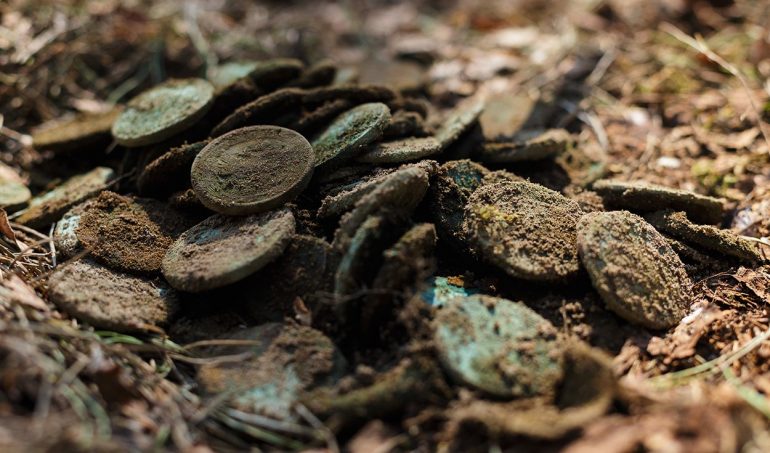The first minting of coins as a standardized currency was a milestone in human history. But when this first happened was still unclear. Excavations in the Chinese province of Henan have now unearthed the world’s oldest well-dated mint. As the researchers report, standardized spade coins were minted there as early as 640 to 550 BCE.
Whether made of gold, silver or other metals: the invention of coins as currency was a turning point in the cultural and, above all, economic development of mankind. Some cultures had standardized pieces of metal or objects such as cowrie shells that played the role of rudimentary currency. But the triumph of real currencies began with coins.
When were the first real coins made?
“Coins not only encouraged commercial exchange, but also opened up new ways for societies to measure wealth, prestige and power,” said Hao Zhao of Zhengzhou University in China and his colleagues. However, when and where the first coins were minted was unclear, as coins dating back to around 500 BCE were already being used in India as well as China and Asia Minor. Or discovered a little earlier. “On the other hand, archeological information about early mints is scarce,” explains the researcher. Some potential embossing workshops in China and Asia Minor also suffer from the fact that they cannot be explicitly dated.
Now, however, Zhao and his team have discovered a mint in Guanzhuang in the Chinese province of Henan, which can be definitively dated – and to – from 640 to 550 BCE. was in operation. “At this location, remains of different stages of coin production were found in clear archaeological contexts,” the team reports. “Mint was part of a well-organized, unified bronze foundry under the auspices of the Zheng Empire.” The city of Guanzhuang was then at an important crossroads of trade routes that linked the imperial city of Wangcheng to the Eastern Plains.
mold and spade coins
Excavations between 2015 and 2019 revealed an extensive area with various workshops in this city, located just outside the southern city gate. “The area included workshops for the production of objects made of bronze, ceramics, jade, and bones,” report Zhao and colleagues. In the Bronze Foundry, which is the largest part of this craft sector, crucibles, casting utensils, bronze relics, unfinished or broken bronze objects as well as numerous clay casting molds and kilns bear witness to the vibrant production.
Among the artifacts, the research team also discovered several clay molds used to produce spade coins, the oldest coinage in China. These spade- or blade-shaped metal coins marked the aftermath of the transition from device money to actual coin currency. This is expressed in, among other things, the increasingly standardized shapes of flat pieces of metal and their increasingly rich letters. In Guanzhuang, Zhao and his team discovered molds for such coins as well as some spade coins. The oldest of these, SP-1, is still largely undeveloped and comes from the oldest layers discovered around 640 BC. were dated.
“This makes Guanzhuang the world’s first known archaeological mint whose age has been reliably determined by radiocarbon dating,” the scientists write. “The SP-1 coin is the oldest spade coin—and, generally, the oldest Chinese coin ever recovered from an archaeologically secure reference.” Foundries were initially used for the production of everyday items such as weapons, carriage parts, or rituals. ships, and found it around 640 BC. A new function as the mint of the Zheng Empire.
What: Antiquity, DOI: 10.15184/aq.2021.94

Web guru. Amateur thinker. Unapologetic problem solver. Zombie expert. Hipster-friendly travel geek. Social mediaholic.





